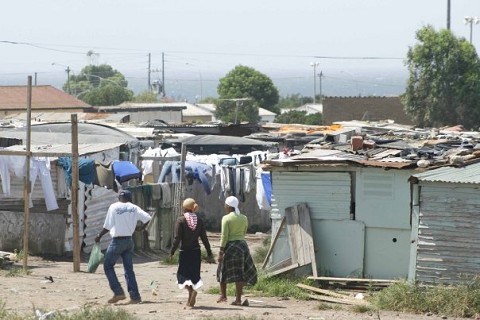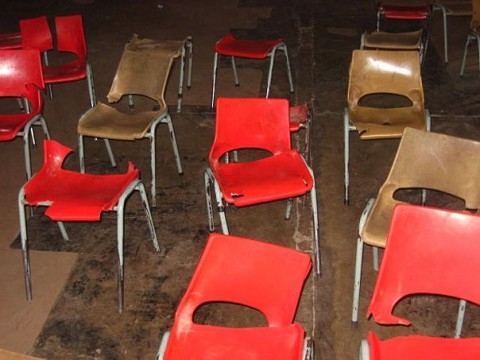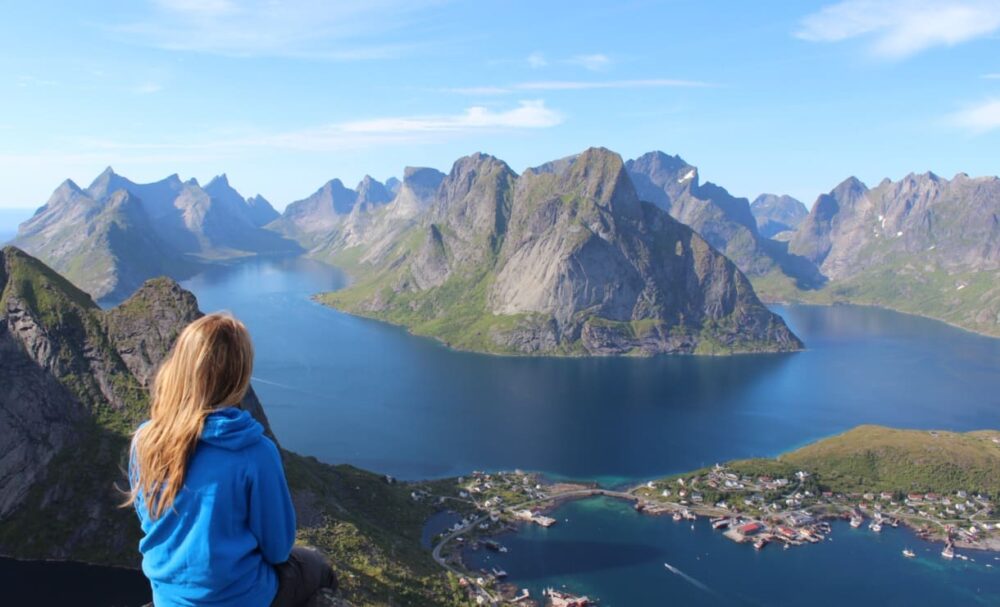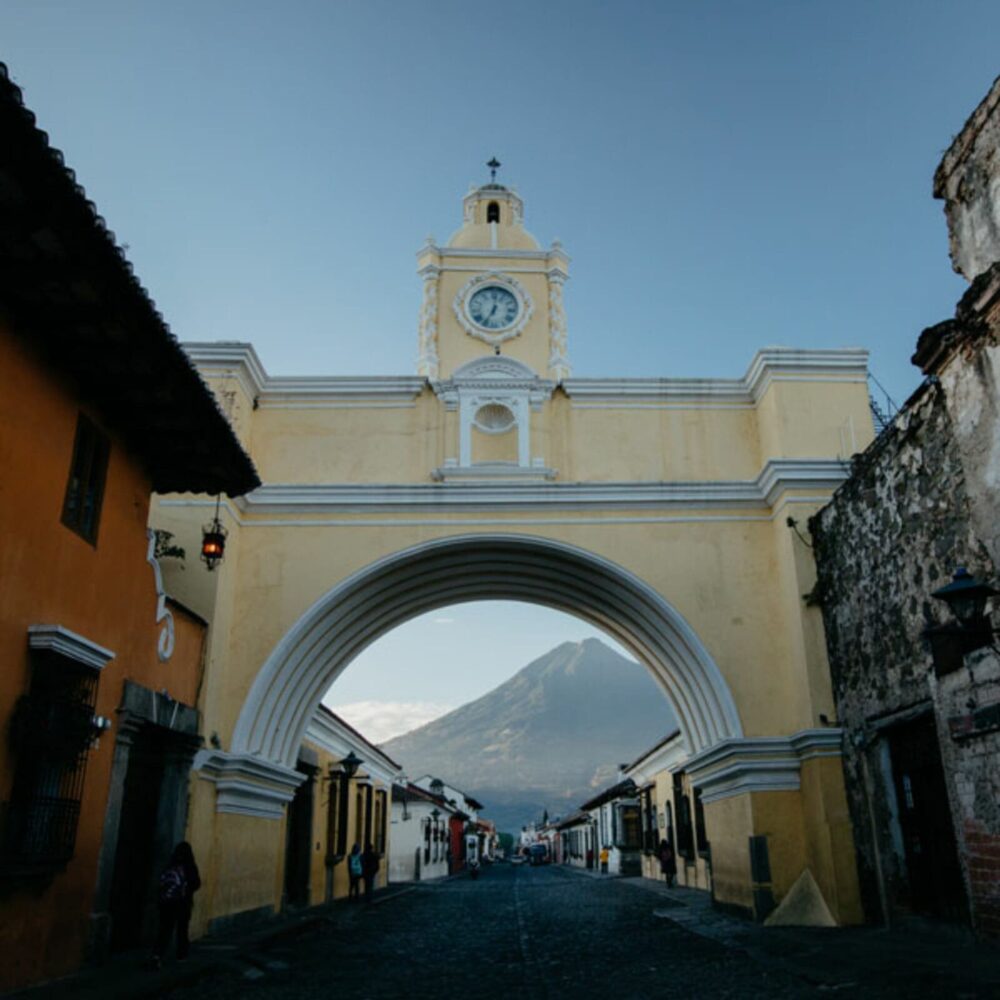years ago I visited Jeffery’s Bay (Jbay to the locals), South Africa for the
first time. I traveled there to do
volunteer work for a year. Upon first arrival, it became clear why people from
all over visit. One of the many visitors to Jbay described what she saw as
“Quaint little cottages and million dollar homes are available for rent, and
most people zoom around town in their nice European-imported cars” (Pictures).
From many places in town, one can see the ocean. Beautiful homes and little Bed
& Breakfasts over-looking the crisp blue water with waves breaking gently
on the beach makes you fall in love with this surfing town on the Indian Ocean. If visitors are lucky, dolphins or whales
can be seen swimming in the distance. Souvenir shops, cafés and surf shops line
the main street that sits parallel to the beach covered in beautiful shells, a
place where any day people can be seen relaxing and enjoying the ocean. This town hosts the Billabong Pro
tournament every July when thousands of visitors and tourists vacation. I fell in love almost immediately no
way not too. Jbay is so close to
perfect that no one notices the flaws, not even the locals.

A
couple days later, I was able to see the other half the town. This half was
dirt road after dirt road lined with shack after shack. “The ghetto [township]
covers hundreds of acres of land, even though each individual family only
occupies a small shack roughly the size of a North American bathroom”(Pictures).
These shacks are made of metal or wood or whatever people can find to build
their homes. Looking around the township of Tokyo Sexwale, I could clearly see
that this was where the Black locals live. There was not one White person in sight.
After
living in town for several weeks, I came to learn more about Jbay. The number
of people living in the townships of Pellsrus, Tokyo Sewale, and Ocean View is
equal to the rest of the town. And
the townships together are not even half the size of the town. Visiting shops in town and going to
local restaurants, I noticed a trend. Only White people are visible to the
customers. At first look there seemed to be no Blacks (true African
descendents) or Coloreds (a mix race) working in Jbay. After more time and
getting to know shop owners and restaurants, I learned that the Black and
Colored workers are behind the scenes where no one can see. They work in the
kitchens or do the janitorial jobs after hours.
When
I went into a shack for the first time, I was shocked. It was a reality check. I walked into this room that was about
8 feet wide and 12 feet long. It was wallpapered with newspaper and magazines
on top of the mismatching pieces of plywood and anything else the single mother
with Aids could find to put walls around her and her young baby. The roof was a
blue tarp and the floor was dirt.
The trap kept the sun out but not rain. The only hope was a small amount
of privacy. After seeing more shacks and spending more time in the townships, I
realized that problems of partiality and habit handicap those who live in the
townships. The cycle will continue
if not stopped.
Many
kids and families in the townships in Jbay and the rest of South Africa have
stories that seem unfair. And they
are unfair. No kids should have to grow up living in a 8′ x 12′ shack that they
share with five or more family members, wearing the same cloths all week, and
not learning how to spell their name till around age 12. To the 40,000 or so
that live in the townships on the outskirt of Jbay, (Pictures) all of this is
normal everyday life. No one expects kids to know how to do math or read or
write, let alone teach them.
What
got me was in 2006, a good ten plus years after the Apartheid ended, the town
still runs like they did under Apartheid. Yes, Blacks and Coloreds have more
opportunities than they did. But why aren’t Blacks and Coloreds able to wait
tables or run a cash register? I mean they have 10 fingers, two legs just like
White people; we are all humans.
So what keeps Blacks and Coloreds living in Pellsrus, Tokyo Sexwale and
Ocean View?
Part
of my job at an after school program in the township of Tokyo Sexwale was to
teach the Black kids English, Xhosa, and Afrikaans, the three languages used in
Jbay. I found out quick that many
of the kids I was teaching unable to write letters, or even name them. Kids as old as 12 were writing letters
backwards or just copying what I had written on the whiteboard, they had no
knowledge of the letters. Letters
are the basic foundation of any language. These Black kids only know how to
speak their language (Xhosa) barely able to read or write in it. Living in a country with 11 official
languages and only knowledge of one is a big disadvantage. In a town based on English and Afrikaans,
these Black kids will struggle interacting with others.
Education
is such an important thing. It is
such a simple thing too; it opens doors and provides opportunities. In America everyone can go to school
whether rich or poor. But in South Africa school fees and uniforms are
necessary for even the public schools.
Most Families in the townships struggle to cover mandatory school fees.
Kids end up not going to school or families go without food just so their kids
can go to school. Even at school learning rarely happens. Sometimes teachers never show up and so
the kids leave and hang out on the streets and get into trouble. The trouble that these kids get into at
young ages stays with them and develops into bad habits as teens. Then these teens grow into adults
thinking that things like drinking, drugs, and sexual abuse are okay. And the cycle continues.
These
kids have no one in their lives telling them what is right or wrong. No one is
showing them how to grow up to be smart and healthy. School should be a place
where you go and learn about numbers and how to read but also about respect and
how to relate to others, how to communicate and live. Kids in the townships
have no one telling them that stealing is wrong or that getting into fights is
bad. Parents are almost
nonexistent. And most of the time
if parents are present they revert to abuse both physical and verbal to get
their points across and teach the lesson. Really good families and kids both do
live in the townships around Jbay and other South African families. Not every family is abusive or
nonexistent. But lots of them are.
The
crime, spread of Aids, oppression, lack of education and despair that go on in
Jbay’s townships do not have to happen.
Habit plays a big factor in what goes on. Ever since the start of the Apartheid, Blacks and Coloreds
are use to being low on the status ladder. Blacks and Coloreds are use to having the bad jobs, to being
told what to do, living from day to day with no idea what the next day brings.
This can be prevented. The
Apartheid ended over a decade ago, with the end of it the Blacks and Coloreds
were no longer at the bottom by law.
Technically, they have the same opportunities as white South Africans.
Yet all races in Jbay and the rest of South Africa are still living like they
lived under Apartheid. Everyone’s use to what they grew up in. Whites are use
to being above and the blacks are use to being on the bottom.
Education
needs to be brought to all ages of people living in the townships. There needs to be many forms of
education covering all areas of life for these citizens. The Adults, those who grew up only
knowing the Apartheid way of life need to be taught how to do things that they
are now able to do. Many families
suffer because they do not know how to manage money. Paid on Friday and by Monday they are broke. Men go straight
to the tavern after work and practically spend the whole weekend there. Some families will go out and buy the
big screen TV or a car then have no more money for gas so the car sits there.
Education provides hope for a better life. It is the catalyst for breaking the cycle.
Just
recently, schools in South Africa have started integrating other races. A few
Blacks and Coloreds go to White schools but rarely if at all will you find a
White student in a Colored or Black school. Ladders refers to White Schools as being “hardly open wide”
to the Black race. Schools should be worried about the quality of education and
not the color of the students or teachers. If it takes White teachers (because
they are educated) in Black and Colored schools to bring up the level of
education and help improve the schools then they should teach there.
White school in Jbay is fully equipped
 with large classrooms, rugby fields with
with large classrooms, rugby fields withgrass, teachers who care about each student and know how and what to
teach. Black and Colored Schools
have classrooms with broken desks and chairs, gravel and glass to play on, and
teachers who do not know what to do half the time. For the black and colored students of Jbay and the rest of
the country to rise above Apartheid and to be successful in life their schools
need to change. They need to be
given a chance. Chances that they have yet to receive.
Nearly all South African children attend primary
school, which for a developing nation is doing good. The quality for the education is another matter. South Africa compares badly even with
other African countries. In an international study in 2003 of young teenagers’
proficiency in maths [sic] and science, South Africa came last of 50 countries
(ladders).
What
that chance looks like for each school maybe different, but one thing that is
common is a quality teacher. Teachers are what a school runs on. Every school
has to have them. Mass chaos and no lessons would exist with no teachers. Who would teach students if there were
no teachers? Schools need teachers
who care about the students, who are educated and qualified to teach. Teachers
who are uneducated and unqualified are only hurting the situation and keeping the
cycle going. This generation of students is at a risk of being a “lost
generation” (Dugger). These students have no education or ability to get out of
where they are.
Teachers
in the townships of Jbay make hardly anything. Like everyone else in the townships,
teachers make just enough to survive.
The teachers that teach at Pellsrus and Tokyo Sexwale schools are hired
to fill empty spots. So few qualified teachers are available to teach that
standards have been lowered. Teachers who would never be hired to teach are
teaching because those who should be teaching are nonexistent or available.
Black
and Colored schools just like the white schools, receive aid from the
government. No matter how many books, nice desks or chalk a school has, if only
uneducated unqualified teachers are hired kids will not learn. Linda Chisholm, an education expert at
the Human Sciences Research Council states, “The learning outcomes will only be
as good as the qualifications of the teachers” (ladder). Schools need educated and qualified
teachers for the job.
Lack
of teachers and money in the nonwhite schools has forced schools to hire
unqualified people to teach. When
incompetent teachers are hired to teach they have no knowledge of what to teach
and as a result learning is nonexistent. According to Ladders the number of
unqualified teachers in South Africa is higher today that it was in 1975. According to Dugger, even President
Zuma has noticed that it is “worse in the poor and working class communities”.
The
Apartheid lasted from 1948 to 1990.
The current Black and Colored teachers grew up during the apartheid
where they were unable to learn.
Blacks and Coloreds were refused higher education. Dugger explains that
because of “inferior education” during the Apartheid, today teachers have no
ability to teach. When tested they scored low on tests that sixth graders
should be passing. So now we have
teachers who know nothing teaching kids. How can someone who knows nothing
teach something?
I
understand that it does take awhile of things to change. Change does not happen overnight and
sometimes change cannot happen overnight.
But for change to happen, steps forward need to be taken. If small steps
are taken, small changes made, little by little things will change. The problem with the townships is those
steps forward are rarely being taken.
There are some great after school programs that ministries have started
but the locals need to take steps toward change themselves.
In
the townships absentness with teachers is higher than that of the students. In
some schools the students are rioting about this problem. Students understand
that they need schooling to get somewhere in life. They have hopes and dreams of becoming teachers, doctors,
and lawyers. But they are not given a chance to reach these dreams. “Half of
[the] students never make it to 12th grade” (Dugger).
All
of the students that do not make it to 12th grade are left wandering
the streets getting into trouble. Kids need to be stimulated, if they is no
stimulation at school kids go out and find something to stimulate them and in
the townships, whether that is sex, drugs, and all kinds of terrible things.
Kids want to learn but in the townships learning rarely happens. Qualified and
educated teachers are needed for the kids to have a chance.
and despair should not be a crutch in the townships for people to use as an
excuse as to why they cannot change but it should be the reason and excuse to
change. Qualified teachers who want to teach need to be found and used to give
kids a chance at the world and at life. When qualified and educated teachers
are hired, teachers will teach and the students will actually learn and things
will change. Competent teachers in
nonwhite schools will change the status quo.
Works Cited
A pictures worth a thousand words. Dantee, 18 March 2007. Web. 27 Oct.2009. Online
posting.
Dugger, Cellia. “Eager Students Fall Prey to
Apartheid’s Legacy.” New York Times.
20 Sept. 2009. Web 26. Oct. 2009
“Ladders out of poverty.” Economist 378.8472 (2006): 9-10. Academic Search Elite. EBSCO. Web. 28 Oct. 2009.








